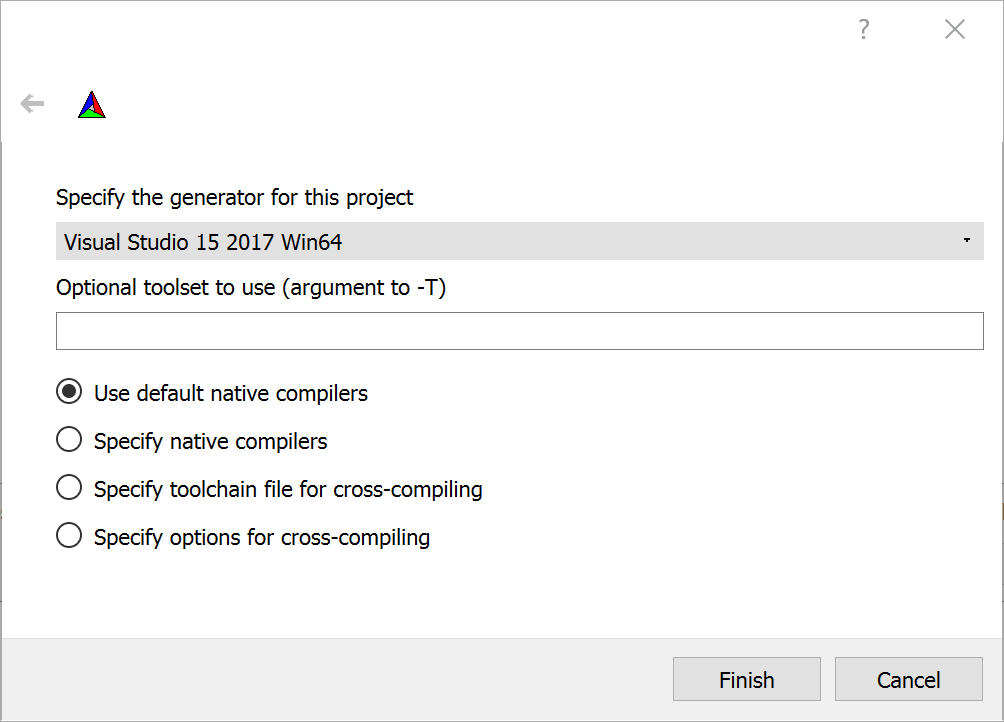
Source as meaning lqcopy the contents of this directoryrq as opposed to lqcopy the directory by namerq, but in both cases the attributes of the containingĭirectory are transferred to the containing directory on the destination. are preserved in the transfer.Īdditionally, compression will be used to reduce the size of data portions of the transfer.Ī trailing slash on the source changes this behavior to avoid creating an additional directory level at the destination. Transferred in lqarchiverq mode, which ensures that symbolic links, devices, attributes, permissions, ownerships, etc. This would recursively transfer all files from the directory src/bar on the machine foo into the /data/tmp/bar directory on the local machine.
IMPORTANT CMAKE VARIABLES UPDATE
On the remote system then the rsync remote-update protocol is used to update the file by sending only the differences. This would transfer all files matching the pattern *.c from the current directory to the directory src on the machine foo. Perhaps the best way to explain the syntax is with some examples: You must specify a source and a destination, one of which may be remote. You use rsync in the same way you use rcp. Note that rsync must be installed on both the source and destination machines. You can also specify any remote shell you like, either by using the -e command line option, or by setting the RSYNC_RSH environment variable.
For remote transfers, a modern rsync uses ssh for its communications, but it may have been configured to use a different remote shell by default, Once installed, you can use rsync to any machine that you can access via a remote shell (as well as some that you can access using the rsync daemon-mode See the file README for installation instructions. Don't confuse lqserverrq with an rsync daemon - a daemon is alwaysĪ server, but a server can be either a daemon or a remote-shell spawned process. Rsync refers to the local side as the lqclientrq and the remote side as the lqserverrq. Specification, OR when an rsync:// URL is specified (see also the lqUSING RSYNC-DAEMON FEATURES VIA A REMOTE-SHELL CONNECTIONrq section for an exception toĪs a special case, if a single source arg is specified without a destination, the files are listed in an output format similar to lqls -lrq.Īs expected, if neither the source or destination path specify a remote host, the copy occurs locally (see also the -list-only option).

Contacting an rsync daemon directly happens when the source or destination path contains a double colon (::) separator after a host The remote-shell transport is used whenever the source or destination path contains a single colon (:) separator after a host There are two different ways for rsync to contact a remote system: using a remote-shell program as the transport (such as ssh or rsh) or contacting an rsyncĭaemon directly via TCP. Rsync copies files either to or from a remote host, or locally on the current host (it does not support copying files between two remote hosts). Support for anonymous or authenticated rsync daemons (ideal for mirroring) General Pipelining of file transfers to minimize latency costs

Support for copying links, devices, owners, groups, and permissionsĮxclude and exclude-from options similar to GNU tarĪ CVS exclude mode for ignoring the same files that CVS would ignoreĬan use any transparent remote shell, including ssh or rsh Some of the additional features of rsync are: Indicates that the file's data does not need to be updated. Any changes in the other preserved attributes (as requested by options) are made on the destination file directly when the quick check Rsync finds files that need to be transferred using a lqquick checkrq algorithm (by default) that looks for files that have changed in size or in Rsync is widely used for backups and mirroring and as an improved copy command for everyday use. It is famous for its delta-transfer algorithm, which reduces the amount of data sent over the network by sending only the differences between the source filesĪnd the existing files in the destination.

It offers a large number of options that control every aspect of its behavior and permit very flexible specification of the set of files to be copied. It can copy locally, to/from another host over any remote shell, or to/from a remote rsyncĭaemon. Rsync is a fast and extraordinarily versatile file copying tool.


 0 kommentar(er)
0 kommentar(er)
